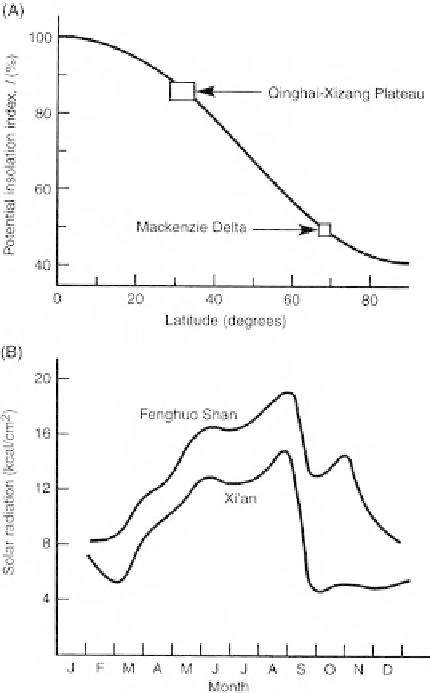Geology Reference
In-Depth Information
Figure
3.1.
Diagrams showing the variability of solar radiation with latitude and altitude.
(A) Potential insolation expressed as a percentage of the potential insolation at the equator (accord-
ing to Dingman and Koutz, 1974). (B) Incoming solar radiation received at two localities in China
at the same latitude (34° N) but at different elevations: Fenghuo Shan at 4800 m a.s.l. and Xi'an
at 1300 m a.s.l. From Wang and French (1994). Reproduced by permission of John Wiley & Sons
Ltd.
cloud cover and a greater transparency in the atmosphere at higher elevations. Therefore,
the combination of low latitude and high elevation makes the Tibet plateau a strong solar
receiver. This effect is still present, but less marked, in the alpine environments of
mid-latitudes.
Based upon elevation, insolation, and temperature, the periglacial climatic environ-
ments can be summarized as follows:
1.
High
Arctic
climates
- in polar latitudes; extremely weak diurnal pattern, strong sea-
sonal pattern. Small daily and large annual temperature range. Examples: Spitsbergen
(Green Harbour, 78° N); Canadian Arctic (Sachs Harbour (Ikaahuk), 72° N).
2.
Continental
climates
- in sub-arctic latitudes; weak diurnal pattern, strong seasonal
pattern. Extreme annual temperature range. Examples: Central Siberia (Yakutsk,
62° N); Interior Alaska and Yukon Territory (Fairbanks, 65° N; Dawson City, 64° N).

